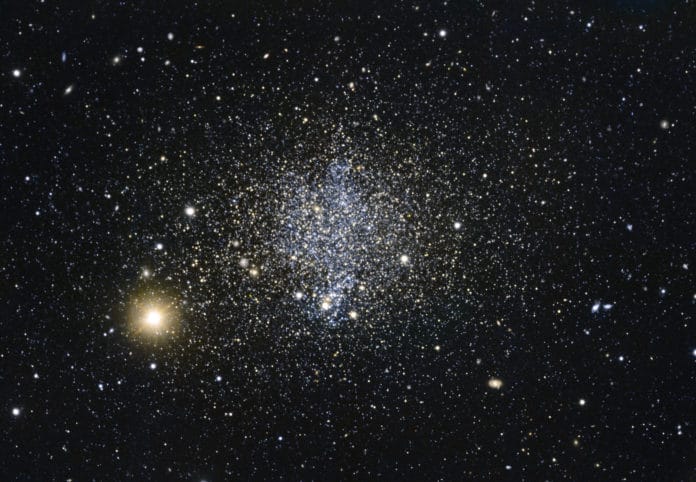Even though nearly all of them are invisible to our eyes, our observable Universe, extending tens of billions of light-years in all directions, contains a fantastic number of galaxies within it.
While our own Milky Way galaxy encompasses between two to four hundred billion stars, small dwarf galaxies contain only tens of thousands to a few billion stars. How stars are formed in these tiny galaxies has long been shrouded in mystery.
Now, an international research team has found the answer to how such small, dwarf galaxies sustain star formation.
A research team from Lund University, Sweden, has established that dwarf galaxies can lie dormant for several billion years before starting to form stars again.
These dormant small galaxies can slowly accumulate gas over many billions of years. When this gas suddenly collapses under its weight, new stars can arise.
For the study, scientists used high-resolution computer simulations. Their simulations suggested that star formation in such galaxies occurs due to heating and ionization from the intense light of newborn stars across the Universe. Explosions of so-called white dwarfs—small faint stars made of the core that remains when normal-sized stars die—further contribute to preventing the star formation process in dwarf galaxies.
Martin Rey, an astrophysicist at Lund University and the leader of the study said, “Our simulations show that dwarf galaxies can accumulate fuel in the form of gas, which eventually condenses and gives birth to stars. This explains the observed star formation in existing faint dwarf galaxies, which has long puzzled astronomers.”
“By deepening our understanding of this subject, we gain new insights into the modeling of astrophysical processes such as star explosions, as well as the heating and cooling of cosmic gas. In addition, further work is underway to predict how many such star-forming dwarfs exist in our Universe, and could be discovered by astronomical telescopes.”
Journal Reference:
- Martin P Rey et al. EDGE: from quiescent to gas-rich to star-forming low-mass dwarf galaxies, Monthly Notices of the Royal Astronomical Society (2020). DOI: 10.1093/mnras/staa1640
